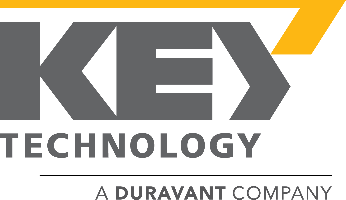The Duravant family of operating companies serve the food processing, packaging and material handling segments.
Exploring the Innovations in Stamping Sheet Metal: A Guide for Modern Manufacturers
In the rapidly evolving landscape of manufacturing, innovations in Stamping Sheet Metal have become pivotal in enhancing productivity and efficiency. According to a recent industry report by Grand View Research, the global sheet metal market is expected to reach USD 299.40 billion by 2025, with the stamping segment playing a crucial role in this growth. The adoption of advanced technologies, including automated stamping systems and precision tooling, has enabled manufacturers to achieve higher reliability and reduced lead times. Furthermore, a study from MarketsandMarkets indicates that investments in digital manufacturing technologies could lead to overall cost reductions of up to 30%, making the integration of digital solutions in stamping processes not just advantageous, but essential. This guide delves into the latest innovations in Stamping Sheet Metal, providing insights that empower modern manufacturers to capitalize on these advancements and sustain competitive advantages in an increasingly demanding market.
Understanding the Basics of Sheet Metal Stamping for Modern Manufacturing
Sheet metal stamping is a vital process in modern manufacturing, often employed for its efficiency and precision in producing complex shapes. At its core, this technique involves cutting, bending, and shaping metal sheets into desired forms using a die and press. Understanding the basics of this process is essential for manufacturers aiming to enhance productivity and reduce costs. Key elements include selecting the right materials, tooling, and machinery, as well as comprehending the various stamping techniques such as progressive, deep drawing, and blanking.
Moreover, modern advancements in stamping technology have revolutionized how manufacturers approach metal fabrication. The integration of computer-aided design (CAD) and computer numerical control (CNC) has enabled manufacturers to create intricate designs with higher precision and reduced lead times. Additionally, innovations like high-speed stamping and automation have significantly increased production rates while maintaining quality. As manufacturers continue to adapt to these innovations, a solid understanding of the principles of sheet metal stamping will empower them to harness these advancements effectively, ensuring they remain competitive in the ever-evolving market landscape.
Exploring the Innovations in Stamping Sheet Metal: A Guide for Modern Manufacturers
| Feature | Description | Benefits |
|---|---|---|
| Computer Numerical Control (CNC) | Automates complex metal stamping processes using programmed commands. | Increased precision and reduced labor costs. |
| 3D Printing Integration | Combines additive manufacturing with traditional stamping methods. | Enhanced design flexibility and rapid prototyping. |
| Advanced Materials | Utilization of high-strength alloys and composites for stamping. | Improved product durability and lower weight. |
| Automation and Robotics | Incorporating robots to handle tasks like material feeding and part unloading. | Increased efficiency and minimized human error. |
| Process Simulation Software | Software that simulates stamping processes to predict outcomes. | Reduced material waste and shortened development times. |
Key Innovations Transforming Sheet Metal Stamping Techniques Today
In the evolving landscape of manufacturing, innovations in sheet metal stamping techniques are redefining efficiency and precision. One of the most significant advancements is the integration of automation and robotics into the stamping process. These technologies not only enhance the speed of production but also improve safety and accuracy. Automated systems can handle complex tasks and repetitive operations, reducing human error and increasing overall throughput without compromising quality.
Another groundbreaking innovation is the use of advanced software for design and simulation. Modern manufacturers leverage computer-aided design (CAD) and computer-aided manufacturing (CAM) tools to optimize stamping processes before they even begin. This pre-production analysis allows engineers to identify potential issues and refine designs, leading to more efficient material usage and reduced waste. Additionally, the rise of Industry 4.0 principles brings connectivity and data analytics into the mix, enabling real-time monitoring and adjustments throughout the manufacturing process. Such integration not only saves time but also provides valuable insights for continuous improvement in sheet metal stamping operations.
Selecting the Right Materials for Effective Sheet Metal Stamping
When it comes to effective sheet metal stamping, selecting the right materials plays a crucial role in ensuring the quality and efficiency of the production process. Different materials exhibit distinct properties, making it essential to choose those that can withstand the rigors of stamping while meeting specific strength and flexibility requirements. For instance, advanced high-strength steels (AHSS) are becoming increasingly popular due to their ability to provide the necessary durability and lightweight characteristics for modern applications. However, to maximize the benefits of these materials, it is vital to select appropriate tool coatings that enhance the die's performance and longevity.
Moreover, innovations in tooling and equipment have significantly influenced the effectiveness of stamping operations. For larger and thicker workpieces, the art of bump bending requires meticulous attention to the choice of tools and setup procedures, which can greatly impact results. Utilizing advanced stretch forming equipment can also enhance production outcomes by yielding stronger parts and minimizing processing steps. As manufacturers navigate these evolving techniques, a careful assessment of material selection and tooling strategies will ultimately drive improvements in quality and efficiency in sheet metal stamping processes.
Exploring Innovations in Stamping Sheet Metal
Incorporating Automation and Technology in Stamping Processes
In the fast-evolving landscape of manufacturing, the integration of automation and technology in stamping sheet metal processes has become paramount for modern manufacturers. The revolutionizing forces of Industry 4.0 usher in smarter machinery equipped with advanced sensors and AI-driven systems, enabling faster production rates and enhanced precision. These innovations not only help reduce human error but also improve product consistency, ultimately leading to higher customer satisfaction.
**Tips:** One effective way to incorporate automation is by investing in programmable logic controllers (PLCs) that can streamline operations and minimize setup times. Additionally, consider utilizing robotic arms for material handling, which can increase efficiency and safety in the workplace.
Moreover, the implementation of smart monitoring systems allows manufacturers to gather real-time data and analyze production performance. This data-driven approach facilitates predictive maintenance, reducing downtime and operational costs. Embracing these automated technologies not only boosts productivity but also positions companies at the forefront of the competitive market.
**Tips:** Regular training sessions for staff on using new technologies can ensure smooth transitions, maximizing the benefits of automation. Investing in employee education about system maintenance can also prolong the life of expensive equipment and optimize production workflows.
Best Practices for Quality Control in Sheet Metal Stamping Operations
In the fast-paced world of manufacturing, quality control in sheet metal stamping operations is crucial to maintaining high standards and meeting customer expectations. Effective practices begin with thorough planning and preparation. Modern manufacturers should invest in advanced technology for precision tooling and ensure that all machinery is regularly maintained to prevent defects.
Tips: Implement a robust measurement system using digital calipers and gauges to monitor dimensions at various stages of production. Regular calibration of tools will help to maintain accuracy and reduce variability in the final product.
Additionally, an engaged workforce is essential for quality assurance. Training employees on best practices and the importance of quality control fosters a culture of accountability. Regular feedback loops should be established, allowing workers to report inefficiencies or issues in real-time.
Tips: Encourage cross-departmental communication to share insights and solutions. Consider setting up a quality audit team that conducts periodic assessments to identify areas for improvement, facilitating continuous development in stamping processes.











